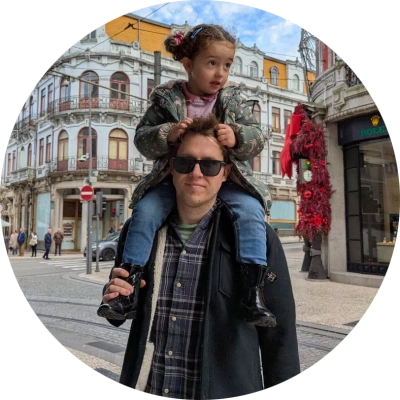7 Ways to Modify Traditional Teaching Methods for Different Learning Styles
Modern education requires adapting teaching approaches to accommodate diverse learning needs. This article presents seven practical methods to transform traditional teaching, featuring insights from education experts who have successfully implemented these strategies. Discover how multimedia learning modules and invitation-based lesson structures can create more inclusive and effective learning environments for students with different learning styles.
Reimagining Online Education Through Multimedia Learning Modules
I realized when we started Legacy Online School that we could not merely transfer the classroom online and expect it to be an effective model. Students learn in different ways- some are visual learners, some are verbal learners, and some need to move or we need to repeat the instruction or the activity in each lesson. Therefore, we entirely rethought the purpose of the classes.
First, we designed lessons into short multimedia modules that engaged students to work at their own pace through videos, puzzles, and simulations. Next, the lessons created a live session that was an active lab, not a lecture. Students arrived with questions, we digitally solved problems, we explored deeper challenges, and we created mini projects and individual lessons. Each teaching moment was created through co-exploration, not one way delivery.
Finally, we created support pods to include break-out pods, peer tutors in real time, and a chat-help area- as needed. Additionally, for learners who need repeated instruction, we provided ways to review the modules any time.
The impact was evidence based. Students who completed the lesson modules and labs successfully scored much greater on all mastery tasks as compared to students in a traditional synchronous classroom. More importantly, students who were quieter, participated with greater frequency and the ratio of 'I did not get this' sank at a disproportionate rate compared to the traditional class.For me, the realization is simple, teaching is not designing opportunities to transfer information, designing opportunities to create multiple entry points for additional minds will change everything.

Transforming Lessons From Instructions to Invitations
In home education, I learned quickly that traditional teaching methods only work if they're flexible. I used to plan tidy lessons with objectives and discussion points, but the moment real children entered the picture, those plans met glitter, LEGO, and chaos. So I started treating lessons as invitations instead of instructions. Instead of beginning with information, I'd start with something intriguing — a question, an object, a short video — and then follow where curiosity led. The same core concepts were there, but each child could approach them in their own way: building, writing, debating, drawing, or quietly reflecting.
The biggest change I saw was ownership. Once I stopped steering every detail, the kids took off. They'd come up with their own projects, teach each other, and proudly show work I never could have assigned. The shift was subtle but huge: learning stopped being something I "delivered" and became something we discovered together. It's amazing how much more deeply kids engage when you give them a framework to climb instead of a script to follow.

Balance Group Work With Individual Reflection Time
Alternating between collaborative group work and individual reflection time acknowledges the social and solitary learning preferences present in every classroom. This balanced approach allows extroverted students to process information through discussion and idea-sharing during group sessions, while providing introverted learners with essential quiet time to consolidate their thoughts. The rhythmic shifting between social and independent work creates a natural energy flow throughout lessons, preventing both burnout from excessive social interaction and disengagement from too much isolation.
Teachers who master this alternation build classroom communities where students recognize and respect different processing styles while developing flexibility in their own learning approaches. Every educator should evaluate their typical lesson structure to ensure both collaborative and independent learning modes are regularly included. Consider restructuring an upcoming unit to intentionally incorporate this rhythmic alternation between group and individual work.
Offer Multiple Ways to Demonstrate Knowledge
Designing assessments that allow multiple expression modes honors the diverse ways students can demonstrate mastery beyond traditional written tests. When educators offer options such as creating videos, delivering oral presentations, building models, or writing papers, they remove barriers that might prevent certain learners from showing their true understanding. This approach shifts the focus from testing ability to testing knowledge, ensuring that assessment results more accurately reflect content mastery rather than skill in a particular expression format.
Students gain confidence when allowed to showcase their learning through their strengths while still being encouraged to develop in areas where they have room for growth. Assessment flexibility also better prepares students for real-world scenarios where problems can be solved through various approaches rather than a single prescribed method. Consider revising an upcoming assessment to include at least two different ways students can demonstrate their knowledge of the same learning objectives.
Pair Visual Elements With Verbal Instruction
Combining visual aids with auditory instruction creates a multi-sensory learning environment that helps students process information more effectively. When teachers pair spoken explanations with images, charts, or videos, they accommodate both visual and auditory learning preferences simultaneously. This blended approach ensures that students who learn better by seeing concepts have equal opportunities to grasp material as those who prefer verbal explanations.
Research indicates that retention rates increase significantly when information is presented through multiple sensory channels rather than just one. Educators should consider how their current lessons might be enhanced by thoughtfully pairing visual elements with their verbal instruction. Try implementing at least one visual component in tomorrow's lesson and observe how student engagement changes.
Add Movement to Create Bodily-Cognitive Connections
Incorporating movement into academic lessons transforms the traditional classroom experience by engaging kinesthetic learners who process information through physical activity. Simple techniques like having students act out historical events, use hand gestures to remember vocabulary, or move to different corners of the room based on their responses creates bodily-cognitive connections that strengthen memory. Even brief movement breaks during longer lessons help maintain focus and energy levels for all students, not just those with kinesthetic preferences.
The physical dimension adds an element of engagement that often translates to higher participation rates and decreased behavior issues. Teachers should rethink classroom layouts and lesson structures to allow appropriate movement opportunities throughout the school day. Start by identifying one lesson this week where adding a movement component could enhance understanding of the content.
Use Manipulatives to Teach Abstract Concepts
Using manipulatives to teach abstract concepts bridges the gap between concrete and theoretical thinking, making complex ideas accessible to students across various learning styles. When learners physically handle objects representing mathematical concepts, scientific principles, or language structures, they form neural connections that pure verbal or visual instruction cannot achieve. Manipulatives are particularly effective for spatial learners who benefit from three-dimensional representations and tactile learners who process information through touch.
This hands-on approach reduces cognitive load by allowing students to externalize their thinking process through physical objects before internalizing abstract principles. Educational research consistently demonstrates that concepts taught with manipulatives lead to deeper understanding and better long-term retention compared to traditional methods alone. Explore how manipulatives could transform understanding of a challenging concept in your curriculum by introducing them in your next lesson.

